Con Dao
Con Dao travel guide
Con Dao Overview
With a population of roughly 7000 people and a relatively small number of tourists, the deserted beaches and deep thick jungles make Con Dao an alluring destination. Visitors to the island are greeted with phenomenal views of the rich green, jungle which covers the mountainous islands before fading off into sandy beaches and crystal waters. The islands’ isolation and dark past mean these islands have been beautifully preserved and mostly untouched by the rapid development which has stormed across Vietnam’s holiday destinations.
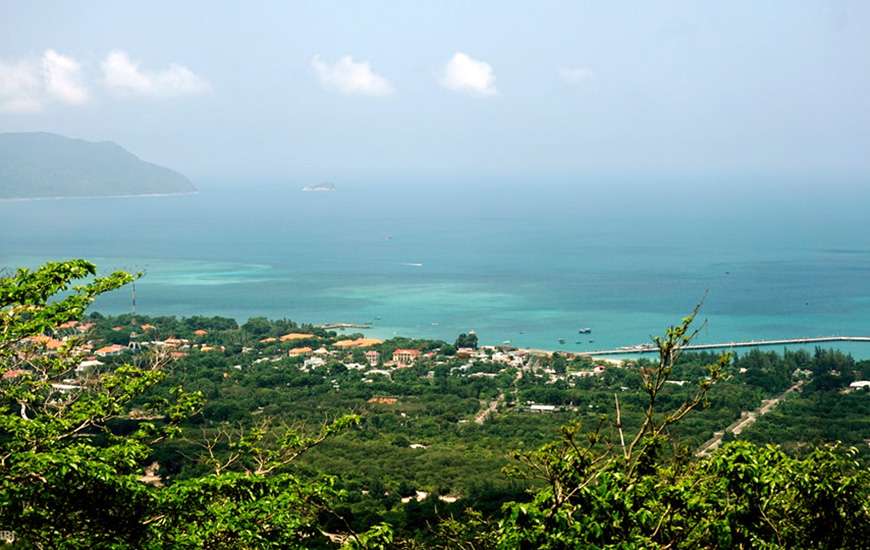
Originally part of the Khmer Empire, the area was claimed by the Vietnamese in the 17th century. In 1702, the British East India Trading Company established a base on the Con Son island with a factory and a settlement. This, however, was short-lived as in 1705 the English on Con Son were massacred, and the settlement and factory were destroyed.
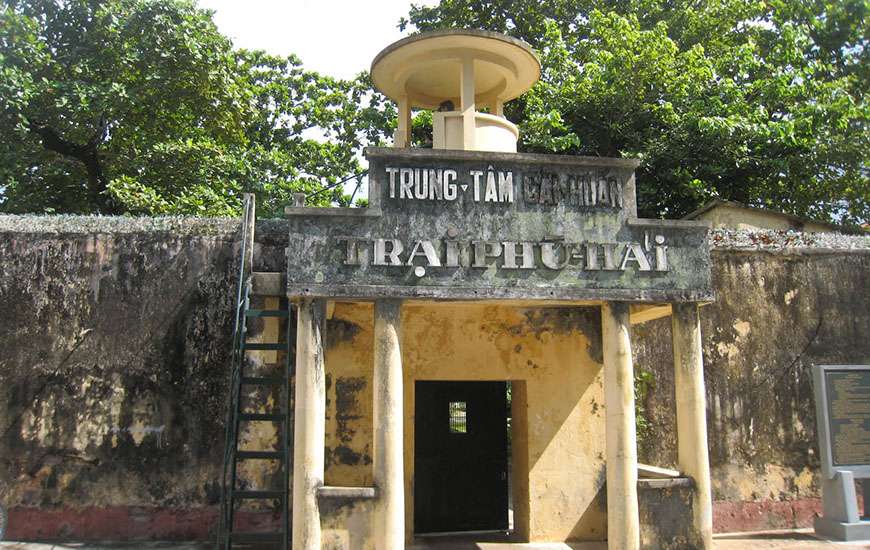
The horrific practices were maintained by the South Vietnam government and the US during the Vietnam War, who incarcerated thousands of Vietnamese Communists on the island. As well as being known for their horrific conditions, the prisons also became known as a sort of training ground or school in communism with many of the revolution's leaders having spent time in the crowded cells.
The prisons continued to function until 1975 when they were shut down after scenes of the horrendous torture were photographed by US photographer Tom Harkin. During the time that the prisons were open, it is thought that roughly 20,000 prisoners died in the walls of the compounds.
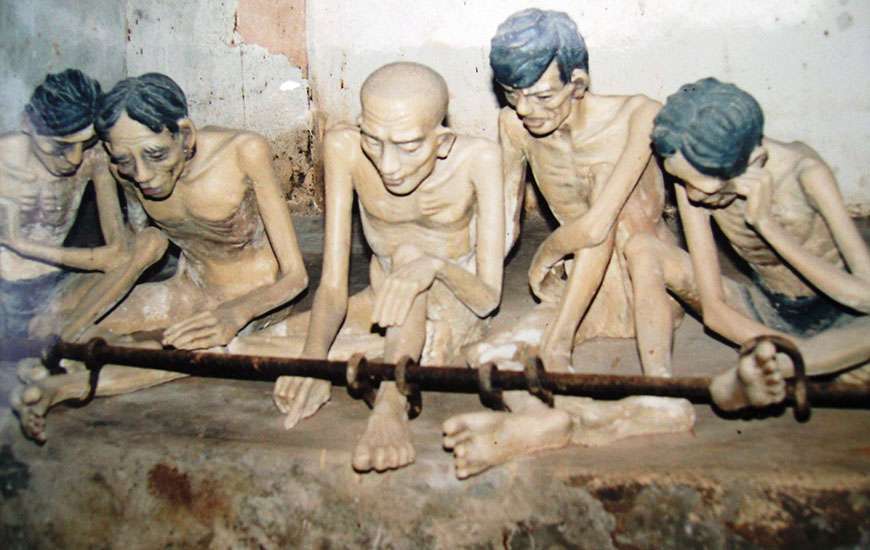
Today, many of the prisons are open to the public and serve as a grave reminder of what took place here. Although visitor numbers to the island are relatively low, subsidised trips for the survivors of the prisons are organised in order for them to pay their respects to lost family and friends. Although graphic and disturbing, the museums ground the island in their history and ensure the memorie of those who suffered and lost their lives here are not lost.
Con Son's iniquitous past, which only ended relatively recently, combined with the topography of the island has meant that development has remained at bay. Most buildings are not more than two stories and the national park spreads, undisturbed over the majority of the island. The preservation of the remarkable natural environment has meant that the island is a thriving ecosystem home to many species of amazing animals. The forests house black giant squirrels and the surrounding water is inhabited by dugong, a marine mammal which is close to extinction.
Like most of southern Vietnam, the Con Dao archipelago experiences a dry season throughout the winter months from December to April and a wet season from May to November. The heaviest rains are usually seen from August to October. There is also the added factor of strong winds and rough seas which sweep around the island at this from September to December.
See and Do
Con Son, the main island has some of the most incredible beaches in the whole of Vietnam. The thin wisps of soft white sand are bordered on one side by palm trees and the other sprawling, turquoise waters.
An Hai Beach is one of the most popular on the beach owing to its beautiful scenery and ease of access from Con Son Town. It's a great beach for lounging in the sun and looking out to sea at the occasional fishing boat.
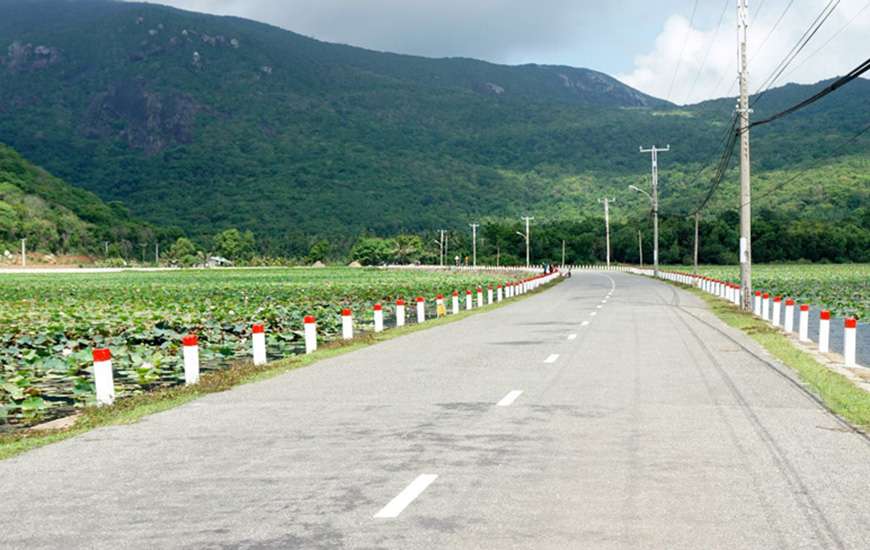
Nhat Beach only shows itself at low tide, spending the rest of the time submerged beneath the lapping waves. As the tide relents, the white moon of sand, dotted by the occasional ocean-smoothed rock, emerges to dry itself in the hot sun. The wonder of this exquisite beach is the peace and space it allows visitors in order to fully appreciate its undisturbed beauty.
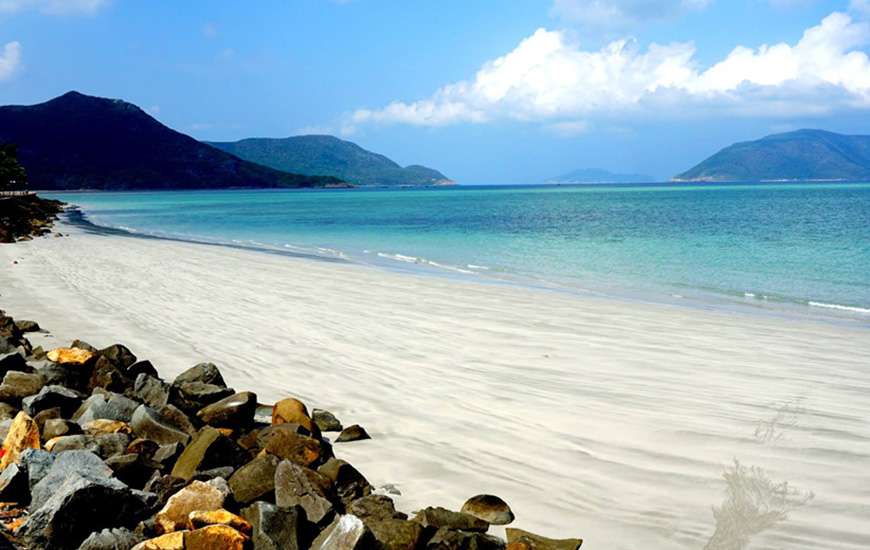
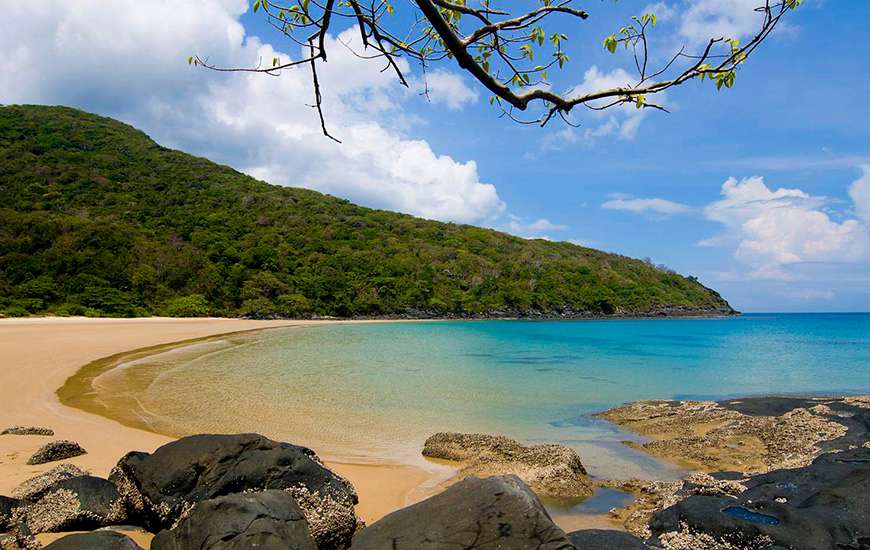
Further inland, the Con Son National Park has many amazing trekking opportunities filled with remarkable scenery and wildlife. Whether you want to tackle the mountain's highest peak, find a waterfall to cool down in or discover a secluded patch for a rest, you will not be disappointed by what awaits on Con Son island.
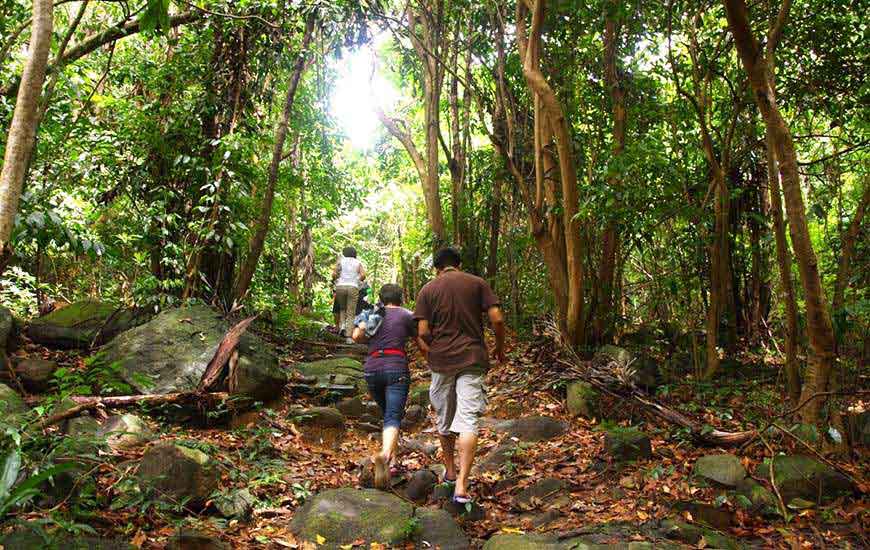
A popular place to visit whilst exploring the island is the So Ray fruit plantations which sit roughly 260 meters above sea level. Once the sight of a forced labour camp for prisoners who were forced to grow crops for their French imprisoners, the plantation is now the playground for the tribes of monkeys who eagerly await gifts of bananas from the visitors.
One of the reasons that the incredible landscape of the island has been kept in such remarkably good condition is that until 1975 it was the setting some of the most savage prisons imaginable.
Known as The Devil's Island, thousands upon thousands of prisoners were incarcerated on the penal colony for crimes against the ruling forces. The oldest and biggest prison on the island is Phu Hai. The tiny, hot cells were crammed with hundreds of prisoners, many of whom died because of the squalid conditions. Today the grounds have been preserved as a museum with skeletal mannequins depicting the horrific conditions.
Phu Tong Camp is also open to the public known for its practice of torturing prisoners in the tiger cages. The infamous tiger cages are also open to the public. Upon viewing the nightmare inducing, dehumanising cells there is gut wrenching smack of reality, these were used until as recently as the 1970s. Prisoners were locked in the underground cages and guards would douse them in caustic lime and beat them through the bars above. It wasn't until photographer Tom Harkin detoured from his governmental tour and photographed the harrowing scenes that this system was condemned and shut down.

One of the most high-profile cases from the penal colony on Con Son is the execution of the young woman named Vo Thi Sau. This tragic story tells of a girl who was captured at just 17 and later sent Con Son for her actions as part of a French resistance group. At the age of 19 she was sentenced to execution, and after just one night on Con Son, she was brutally executed by firing squad. Vo Thi Sau has been canonized and is regarded as a national martyr for the stoicism and bravery she showed in the face of such cruelty. It is said the Vo Thi Sau refused to wear a blindfold as she was brutally executed and was calmly singing songs of flowers in bloom. Her enduring faith in the fight for independence and resolute belief that bloodshed would one day cleanse the soil of Vietnam, have led to Vo Thi Sau becoming a revered patriotic symbol.
Culture and Arts
The daily market is one of the best places to experience a bit of local culture with the flurry of activity peaking in the early hours of the morning. Each day, the small modest building fills with a crowd of stalls selling fresh produce and wholesome, satisfying breakfast dishes. This is a fantastic opportunity to grab some delicious food and do a spot of people watching.
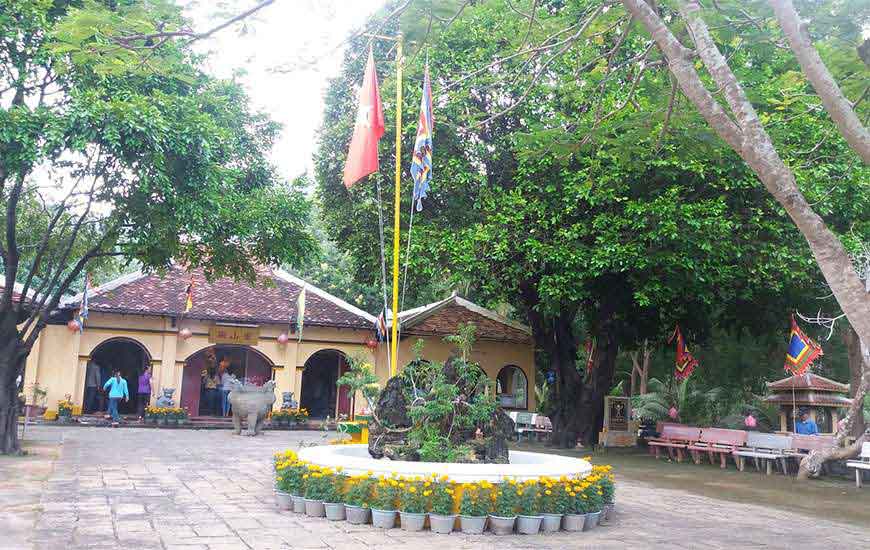
The son of Nguyen Anh and Phi Yen also has its own temple on the island. Prince Cai Temple has a shrine to the young boy and the small grave. The white model of a horse speaks of the youth and innocence lost in the death of the child.
Food and Drink
The night market on Tran Huy Lieu street is a great place to pick up a flavoursome Vietnamese dish to refuel after a day of exploring the wild island. The menus feature a ion of freshly prepared seafood dishes as well as the regular Vietnamese staples. The seafood options vary daily depending on what is available, but the fresh produce along with mouthwatering Vietnamese sauces always makes for a winning combination. One of the more popular, and readily available, seafood dishes on the island is the thick, flavoursome oyster porridge. Vendors have perfected their recipe over time and serve up steaming bowls of the porridge from their stalls.
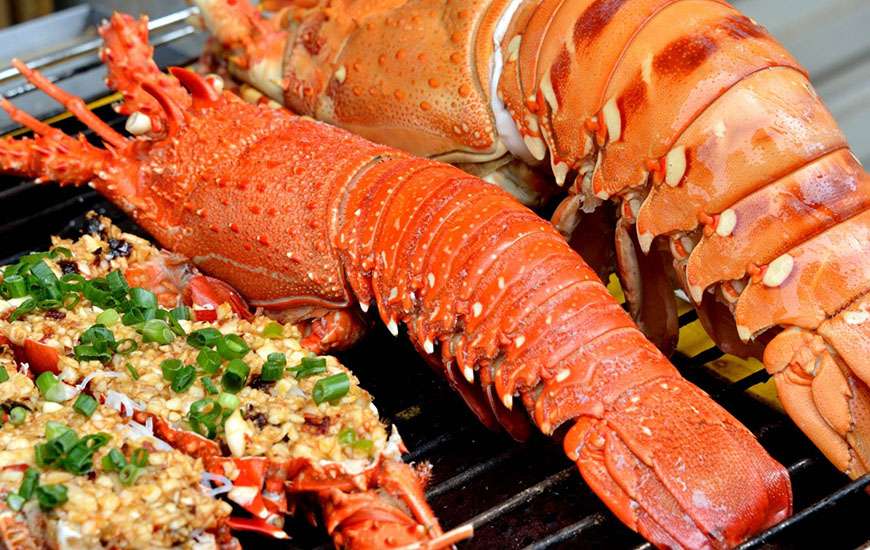
For those in search of some home comforts, Caffe Infiniti and La Caffe Deli offer some great western options.
Festivals and events
Although the main celebration takes place on the 18th day of the 10th lunar month, preparations begin well in advance with each person being assigned a different task. In order to show their respect for Phi Yen's actions and the ideals she represented, nine groups make offerings of special food at the shrine. Local music, dance performances and traditional games bring joy to the celebration of Phi Yen's life.

